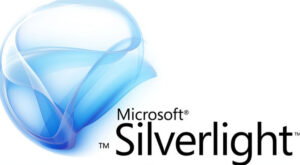
In the early 2000s, web development underwent a significant transformation with the introduction of AJAX (Asynchronous JavaScript and XML). This groundbreaking technology allowed web applications to deliver a more interactive and responsive user experience, and Microsoft played a pivotal role in popularizing AJAX through its innovative implementations and tools.
The Emergence of AJAX
Before the advent of AJAX, web applications were typically built using a request-response model, where users interacted with a web page by submitting forms, and the server responded with a new page. This model had limitations in terms of user experience and interactivity.
AJAX, which was coined by Jesse James Garrett in 2005, offered a new approach. It allowed web applications to make asynchronous requests to the server without refreshing the entire page. This resulted in faster and more interactive web experiences, similar to desktop applications.
Microsoft’s Contribution
Microsoft recognized the potential of AJAX and actively contributed to its adoption in web development. The key milestones in Microsoft’s involvement with AJAX are:
- ASP.NET AJAX (formerly Atlas): Microsoft introduced ASP.NET AJAX, a framework for building web applications with rich, interactive user interfaces. ASP.NET AJAX provided server controls and client-side libraries that simplified AJAX development.
- UpdatePanel: ASP.NET AJAX included the UpdatePanel control, which enabled partial page updates without a full page refresh. This feature was particularly powerful for enhancing user experiences in web applications.
- Microsoft AJAX Library (ScriptManager): Microsoft developed the Microsoft AJAX Library, which consisted of client-side JavaScript libraries for AJAX development. The ScriptManager control allowed developers to easily integrate these libraries into their web applications.
- Integration with Visual Studio: Microsoft ensured seamless integration of AJAX development into its Visual Studio IDE. Web developers could create, debug, and deploy AJAX-enabled applications with ease.
Impact on Web Development
The introduction of AJAX by Microsoft had a profound impact on web development in several ways:
- Enhanced User Experience: AJAX-powered web applications offered a more responsive and dynamic user experience. Users could interact with web pages without experiencing the jarring page refreshes of traditional web applications.
- Improved Performance: By minimizing data transfer and server round-trips, AJAX reduced the load on servers and improved the performance of web applications.
- Rich Web Applications: Developers could create web applications with functionalities previously associated with desktop applications, such as real-time updates, drag-and-drop features, and interactive forms.
- APIs and Libraries: Microsoft’s AJAX libraries and APIs set a standard for AJAX development, making it easier for developers to adopt and work with this technology.
- Cross-Browser Compatibility: Microsoft’s contributions ensured that AJAX worked consistently across various web browsers, reducing compatibility issues.
Conclusion
Microsoft’s role in introducing AJAX was instrumental in revolutionizing web development. By popularizing this technology and providing tools and frameworks to simplify its implementation, Microsoft empowered web developers to create more dynamic, responsive, and user-friendly web applications. AJAX fundamentally changed the way users interact with web pages, leading to the development of rich web applications that bridge the gap between traditional websites and desktop software.



